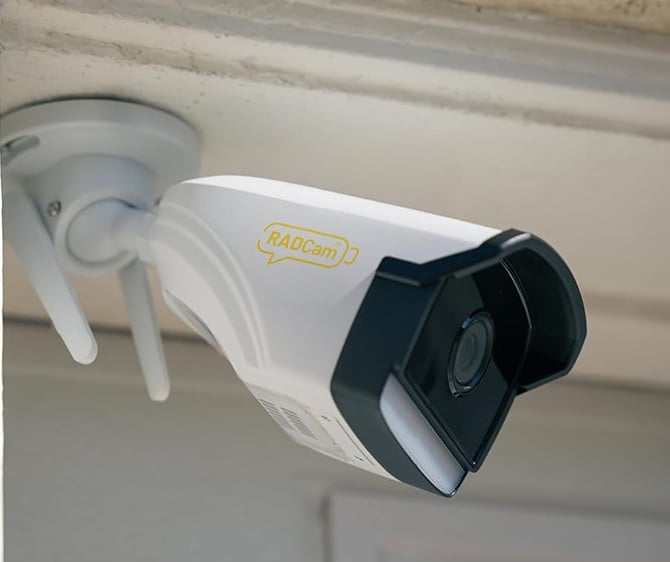AI is creeping into nearly every corner of the smart home, and home security is no exception. The RADCam home security camera from RAD Residential takes things a step further by combining AI-driven threat detection with real-time conversational capabilities that can talk directly to anyone approaching your property.

At its core, RADCam uses what the company calls AIR (Autonomous Intelligent Response) technology to not only identify people, packages, weapons, and other objects but also interact verbally through built-in speakers and microphones. Think of it less as a passive camera and more like a virtual security concierge that can ask questions and issue warnings.
When RADCam launched last fall, it could detect people, packages, and motion – something many security cameras can do today. What’s new is that the AIR technology can now recognize firearms and knives, analyze activity in context, and adjust its responses accordingly. It can even tailor interactions based on time of day or situation – sounding welcoming during the day and more assertive late at night. These features go beyond the usual “record and alert” model, giving the camera the ability to act as an autonomous front-line presence rather than just a passive observer. It’s the closest I’ve seen to a security device that can think and react in real time, without waiting for you to intervene.
Read more: Yale’s New Smart Lock Future-Proofs Your Front Door
The Role of AI in Threat Assessment
With a $24.99 monthly subscription, RADCam unlocks its full suite of AI-powered capabilities, including human, package, firearm, and knife detection, as well as its headline feature: autonomous two-way communication. The idea is to let the camera handle routine interactions and even potentially deter threats without human involvement.
While I’m impressed by how far RAD-R has taken AI-driven recognition and conversational interaction, I’m not at a point where I’d trust AI alone to make a decision as serious as calling the police. This is where my comfort level diverges. I prefer the approach SimpliSafe takes with its Active Guard service (starting at $49.99 per month). There, AI is used to filter motion events and assess threats, but a human agent always has the final say before sounding alarms or contacting authorities. For me, that extra layer of oversight is critical. I wouldn’t want the police called to my home because of an AI hallucination.
Read more: SimpliSafe's New Service is Trying to Stop Crime Before It Happens
Where RADCam Fits In
From a hardware perspective, the RADCam has the basics covered, but it’s nothing special. It’s a wired Full HD camera (1080p) designed for outdoor use (IP66), with a 120-degree field of view, night vision, custom detection zones, and a 64GB SD card for storage. It works over WiFi or Ethernet and integrates with Alexa, Google HomeKit, and its own app for remote monitoring and management. Without the subscription, you still get live streaming and motion detection.
There's no reason to buy the RADCam without paying for the AI subscription features, as those are what set RADCam apart. I see it appealing to early adopters who want to push beyond standard cameras and experiment with the idea of AI as a front-line security presence. A single RADCam camera costs $84.99, while a three-pack is priced at $199.99.
[Image credit:RADCam]
















